Bless These Doors

What lies behind those closed portals you pass by as you wander the old sections of Jerusalem or Tzfas?
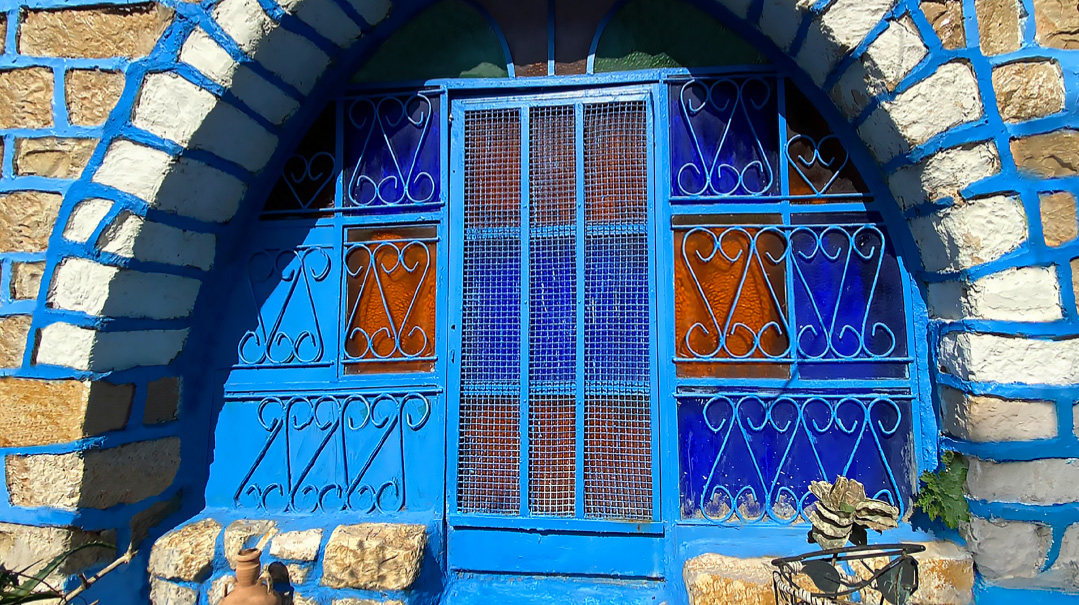
Photos: Devorie Zutler
D
evorie Zutler always loved taking photos, a love she says she inherited from her mother.
“I had a good camera and a good eye and spent most of my summers in the bungalow colony running after my children, capturing their summer experiences,” Devorie says.
For about 15 years, Devorie worked as a travel agent in the Flatbush section of Brooklyn, where she lived, but her summer hobby took off anyway. Other bungalow colony moms wanted in on the photo shoots, and despite Devorie’s protests at the time that she wasn’t a professional photographer, she developed a seasonal gig taking family and children’s portraits in the country.
“I’d go to my sister’s bungalow colony as well, take photos of my nieces and nephews, and then of course, her friends wanted me to photograph their kids, and it just kind of spiraled from there,” Devorie remembers. “I’d set up shoots on the beach for families who didn’t go to the bungalow colonies, and just like that, I sort of fell into the field of photography.”
Devorie had been working as a professional photographer for almost ten years when she received a call from a bungalow colony client who wanted her to give a photography class to the women of Mekimi, an organization for families of sick children. The Mekimi mothers got together weekly for some respite, and the organization would arrange a fun activity for them. The women wanted to learn photography, and the Mekimi volunteer thought of Devorie.
“My husband is a musician who often played for children in the hospital,” Devorie says. “I also wanted to do chesed with my talents.”
Despite a terrible fear of public speaking, Devorie pulled out a notebook and began to jot some thoughts down. Before she knew it, she had filled the entire notebook with a well-plotted curriculum.
“I looked down in surprise and thought, You know, this would make a great Sunday photography workshop for girls.”
The Mekimi class was a huge success, and within two days, Devorie, never one to do something halfway, had created ads, a calendar outlining a class schedule, and a complete photography curriculum geared to young girls. Soon enough, one thing led to another.
“The girls’ mothers called to sign up their daughters and told me they would love something similar, so that was my next project. Of course, I had to create a more mature course geared to women and teens, where we actually learned shutter speed, aperture, and all the other technical aspects of photography.”
After a few years of working both as a photographer and a photography course instructor, Devorie realized she was juggling two full-time jobs. She decided to devote her professional time completely to photography education.
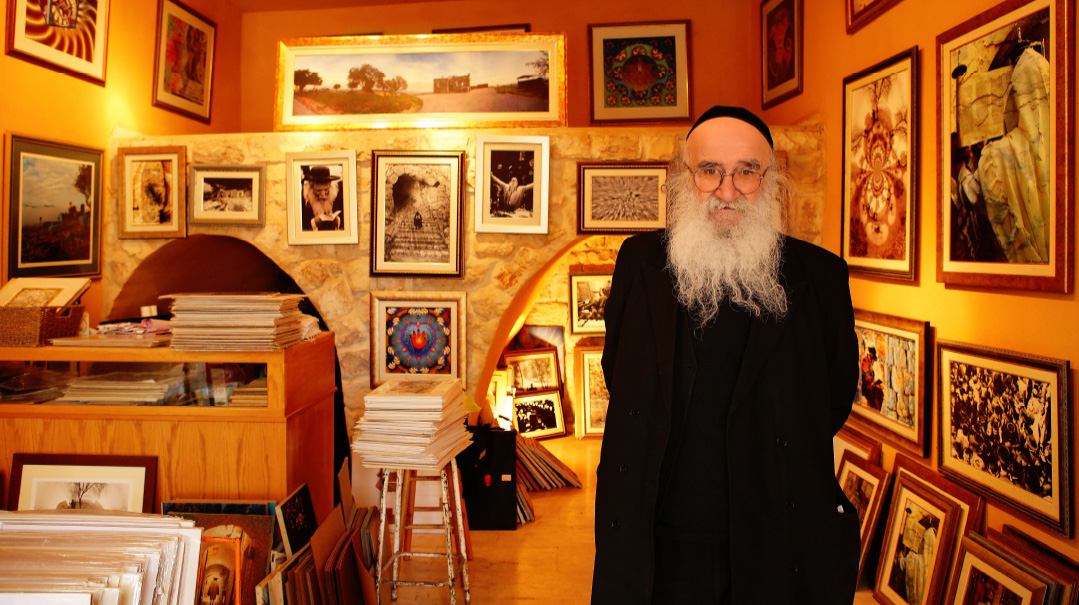
Perfect Timing
In 2017, Devorie moved to Monsey. When her newly married daughter moved to Eretz Yisrael two years later, Devorie was delighted to have the perfect excuse to visit her favorite place on earth.
Over the next two or three years, Devorie was in Israel five times.
“In between family and mekomos kedoshim, I found myself wandering the streets of Israel, camera in hand,” Devorie remembers.
“My mind is constantly thinking in terms of photo opportunities. It’s how I’m wired,” she explains. “Wherever I am, and no matter what I’m doing, I think in terms of photography.”
Once while on a tour, instead of concentrating on the tour guide, Devorie was struck by the foliage against the background. That would be a great example for my students for my depth of field lesson, she thought. She’d notice the gorgeous quality of light at sunset, or think about how a certain background would blur so beautifully if she used an aperture of 1.4.
“I captured some incredible shots, like this perfectly timed photo of this man wearing tefillin as the sun sets — we call that golden-hour lighting — or this shot of this French artist in his gallery,” she says.
The artist, Yaacov Kaszemacher, was a French baal teshuvah who noticed Devorie wandering around Tzfas with her camera. The two began speaking, and he showed Devorie how he both painted and took photographs, combining the two mediums. When Devorie heard he had passed away, she sent the photo she took of him in his gallery to his son, who was deeply touched.
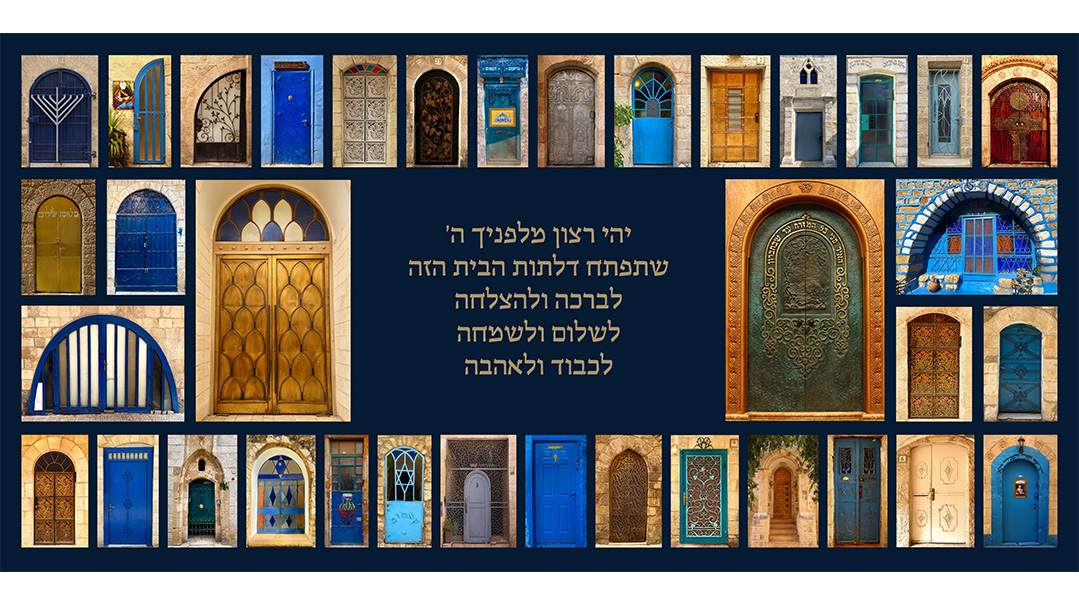
Gateway to Blessing
Wandering the streets of Jerusalem and Tzfas, Devorie found herself entranced by the special doors she saw. “Their uniqueness, their colors, their shapes were just calling for me to photograph them — there’s a mystique to a door,” Devorie says thoughtfully. “You never know what lies behind. Each one is unique, and each one is the beginning of a story.”
Over the course of approximately seven or eight years, Devorie accumulated a collection of close to 200 photos of doors.
She wanted to create something special with all these beautiful doors that she had photographed, but didn’t quite know exactly what she was going to do. One thing though was clear to her; she very much wanted it to be meaningful and inspirational. She didn’t want to simply make a collage, lining up the doors, one after the other.
Her door project somehow remained on the back burner for years… Until this past February, when Devorie went to Israel once again and accumulated even more photos for her door collection. This time, she was determined to finally address this long-lost project of hers.
When she returned from her trip, she sat down and narrowed the 200 door photos that she had accumulated over the years down to her 36 favorites.
She was also still wondering how to make this project meaningful, and considered finding a pasuk in the Torah that she could place in the center of the doors, that had the word “door” or “entranceway” in it. She enlisted the help of her son-in-law and husband to help her find such a pasuk, and indeed found one, but it didn’t feel “perfect” to her.
One day, while thinking about what to do, she had a brainstorm. Why not incorporate all these beautiful doors to make an elegant Bircas Habayis, asking Hashem to open the doors of my home to brachah, hatzlachah, shalom etc.
She loved the idea immediately. Finally, the idea that had germinated in the back of her mind for so many years felt like it was becoming a reality.
Devorie then searched for a “Yehi Ratzon” to place in the center of the Bircas Habayis, but couldn’t find one that matched her sentiments perfectly. Ultimately she wrote her own tefillah, incorporating the various brachos she wanted to see in her home. Some Israeli friends perfected the grammar, a rav approved the text, and her Bircas Habayis was born.
Devorie originally created the Bircas Habayis for her own home, but after a few people who knew what she was doing mentioned they would love one for themselves, she decided to make it available to the public, sharing the doors in a way that would allow others to see the beauty she saw.
Devorie reached out to three highly acclaimed tour guides from Jerusalem, Tzfas and Chevron to verify and confirm each door’s history and details, and she compiled the photos, locations, and history of each door in a corresponding beautiful coffee-table book. The Bircas Habayis wall décor and coffee-table book are sold as a limited-edition set.
“The Doors of Israel: A Gateway to Blessing” has attracted attention from art galleries and hotels around the world, including the Waldorf Astoria of Jerusalem. Devorie hasn’t yet displayed her project there because the hotel lacks available wall space with the correct dimensions needed for the Bircas Habayis, but their interest is a nod to her artistic talents.
The following is a sampling of doors turned into works of art.
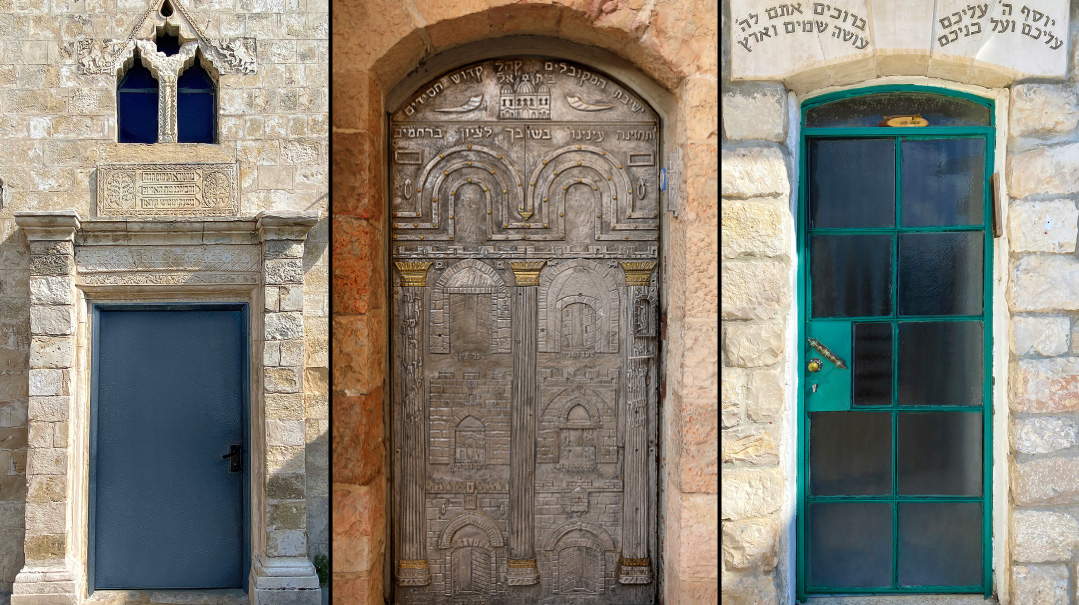
(L-R: 1,2,3)
1 Good Shabbos
This is the entrance to the Ari Ashkenazi Shul in the Old City of Tzfas, built on the very spot where the Arizal and his students would come on Erev Shabbos dressed in their finest white robes to welcome the Shabbos Queen. The shul was built about 400 years ago, after the Arizal’s passing, and reconstructed in the mid-1800s, overlooking the ancient city.
2 Jump to Jerusalem
This magnificent silver-etched door leads to the famous Yeshivat HaMekubalim (The Kabbalists’ Yeshivah) in Jerusalem’s Jewish Quarter. Founded in 1737, the yeshivah is known for its emphasis on the study of Kabbalah. Its engraved door depicts the seven gates of the Old City of Jerusalem.
Many prominent rabbanim learned here, including the Rashash, Rav Shalom Sharabi, who succeeded his father-in-law Rav Gedalia Chayon as rosh yeshivah. The book tells the backstory.
In the early 1700s, young Shalom Sharabi lived in Yemen and sold rugs in the street. One day, a non-Jewish customer asked him to bring a rug to her house. Once Shalom was in the house, she locked the front door. Shalom immediately realized the woman had impure intentions and convinced her to take a look at the rug on the porch in the sunlight.
Shalom stood on the porch, several stories high.
“Hashem, if you save me, I’ll travel to Jerusalem,” he promised, and then he jumped off the porch to escape the woman and her evil plans. He survived miraculously, and he kept his promise and journeyed to Jerusalem. There he became the janitor in this yeshivah for mekubalim.
One day, a question arose, and none of the mekubalim were able to answer it. When the rosh yeshivah, Rav Gedalia, opened his sefer the next day, he was shocked to discover a note inside with the answer. It took some time, but eventually the note-writer’s identity was disclosed, and the janitor Shalom Sharabi — who was now revealed to be a talmid chacham of note — was accorded the respect he deserved. Harav Shalom Sharabi married Rav Gedalia’s daughter, and after his father-in-law’s death, he took over as rosh yeshivah.
3 Blessings of Abundance
This door leads to a private family residence and is located on Rechov Hachasidim in Tzfas. The pasuk on top of the entranceway says “Yosef Hashem aleichem, aleichem v’al beneichem — may Hashem add upon you, upon you and upon your children.” This entranceway sits at the top of the stairs above the Ari Ashkenazi Shul and is next to Kikar Hameginim (The Defender’s Square), the main square of the Tzfas’s Jewish Quarter.
The building next to this door hosted the Tzfas headquarters of the Haganah, the predecessor to the Israel Defense Forces (IDF), which defended the Jewish population in the British Mandate era from 1920 to 1948. During the 1948 War of Independence, the Arabs outnumbered Tzfas’s population almost ten to one, but with Divine assistance, the Jews were successful in taking Jewish control of the city.
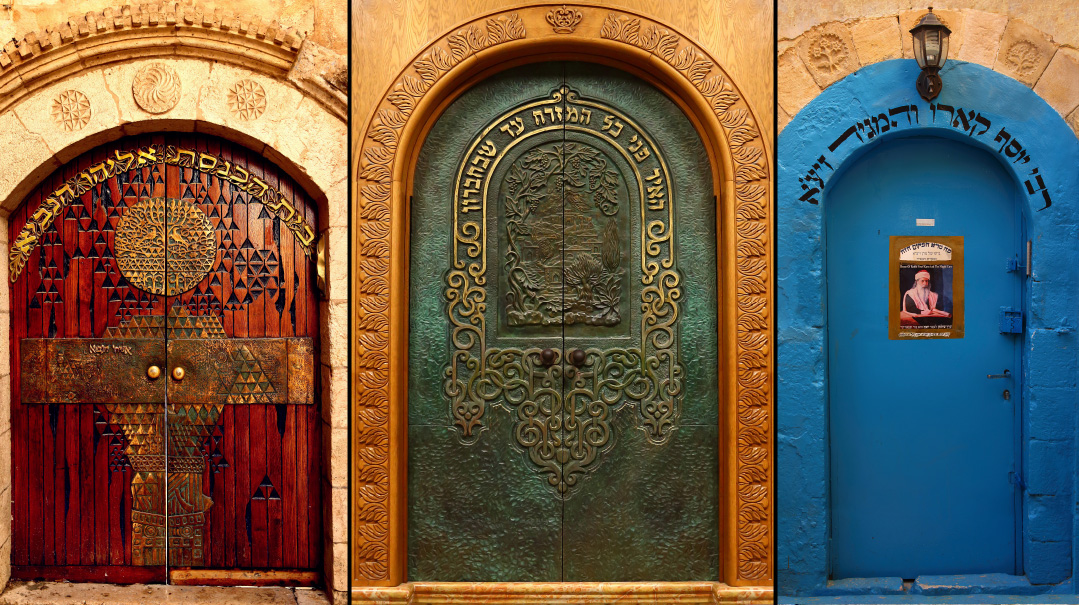
(L-R: 4,5,6)
4 The Tenth Man
This majestic door is the main entrance to the Beit Knesset Eliyahu Hanavi, situated on Rechov Bet El in the Jewish Quarter in the Old City of Jerusalem. Legend has it that the shul’s name stems back to a Yom Kippur long ago, when the mispallelim were short one man for a minyan. Suddenly, a tenth man appeared and they were able to start services. When the stranger mysteriously disappeared after Neilah, the congregants concluded he must have been Eliyahu Hanavi. They named the shul after him and have kept the chair he sat in until this very day.
5 Scrolls for the Patriarchs
These are the doors of the aron kodesh in the shul housed in Mearas Hamachpeilah, the burial place of the Avos and Imahos, in the holy city of Chevron.
6 Doorway to Halachah
Tucked into a small courtyard around the corner from the busy art galleries of Tzfas, on Beis Yosef Street in the heart of the Old City of Tzfas, hides the entrance to the home of the Beis Yosef: Rav Yosef Karo. It was in this very location that Rav Yosef completed his magnum opus, the Shulchan Aruch (The Code of Jewish Law), which until today remains the most widely accepted compilation of halachah ever written.
The Beis Yosef, who was expelled from Spain along with the rest of Spanish Jewry at the end of the 1400s, eventually settled in Tzfas in 1536. Spurred by worry about what impact the forced conversions, Inquisition, and ultimate expulsion might have on Jewish tradition and faith, Rav Karo spent 32 years composing his sefer. He served as the city’s rav until his death in 1575, at the age of 87.

(L-R: 7,8,9)
7 Never Forgotten
This door leads to the Kosov Shul, at the entrance to Rechov Alkabetz right next to the Artists’ Row in the Jewish Quarter of Tzfas. It was built by immigrants from Kosov in Galicia, Poland, who came to Tzfas after the 1837 earthquake and built their shul just below the Ari Ashkanazi Shul. Over time, the shul in Tzfas was abandoned and fell into disrepair.
In 1990, a group of followers of the Biala Rebbe asked the Tzfas Beis Din for permission to revitalize the shul. The Beis Din agreed on condition that the new congregants use the name “Kosov” in recognition of the original community and would incorporate Kosov traditions into their davening. The new trustees also established a memorial on the stone face of the shul’s outer wall to memorialize the Jews of Kosov who were murdered by the Nazis. In the notes of tefillah sung in the shul, you can hear the strains of the marriage of old and new, the forgotten and the future.
8 Micro-managed
This beautiful blue door at 10 Rechov Beit Yosef leads to the now-closed shop of the late Moshe Dadon, one of Tzfas’s most talented artists. Born in Casablanca, Morocco, Dadon was chosen as a young boy to safeguard the community’s sifrei kodesh by learning to inscribe them as pictures using a technique called microcalligraphy.
After moving to Israel in the 1960s he eventually moved to Tzfas. For decades he produced masterpieces, integrating Jewish texts into his art at an astounding ratio of 63 letters per square centimeter, before passing away in 2020 at the age of 78.
9 No More Destruction
This magestic door is one of the main doors of the famous Churva shul, located at 81 Rechov HaYehudim in the center of the Jewish Quarter in the Old City of Jerusalem. Its name, which means destruction, reflect the shul’s history.
It was originally built in the 1700s by the talmidim of Rav Yehuda Hachassid, who had emigrated from Poland, but destroyed a few years later by Ottomans, because the Jewish owners hadn’t repaid their debts to the Arabs. The ruin became known as the Churva. It lay desolate for 116 years until a group of the Vilna Gaon’s disciples, the Perushim, rebuilt it in 1864. Less than 100 years later it was destroyed yet again by the Jordanians in 1948. The shul was finally restored to its former glory on Rosh Chodesh Nissan 2010. The community of the students of the Vilna Gaon in the Old City of Jerusalem still maintains it as a place of Torah and tefillah, and thousands visit it every year.
(Originally featured in Mishpacha, Issue 969)
Oops! We could not locate your form.







